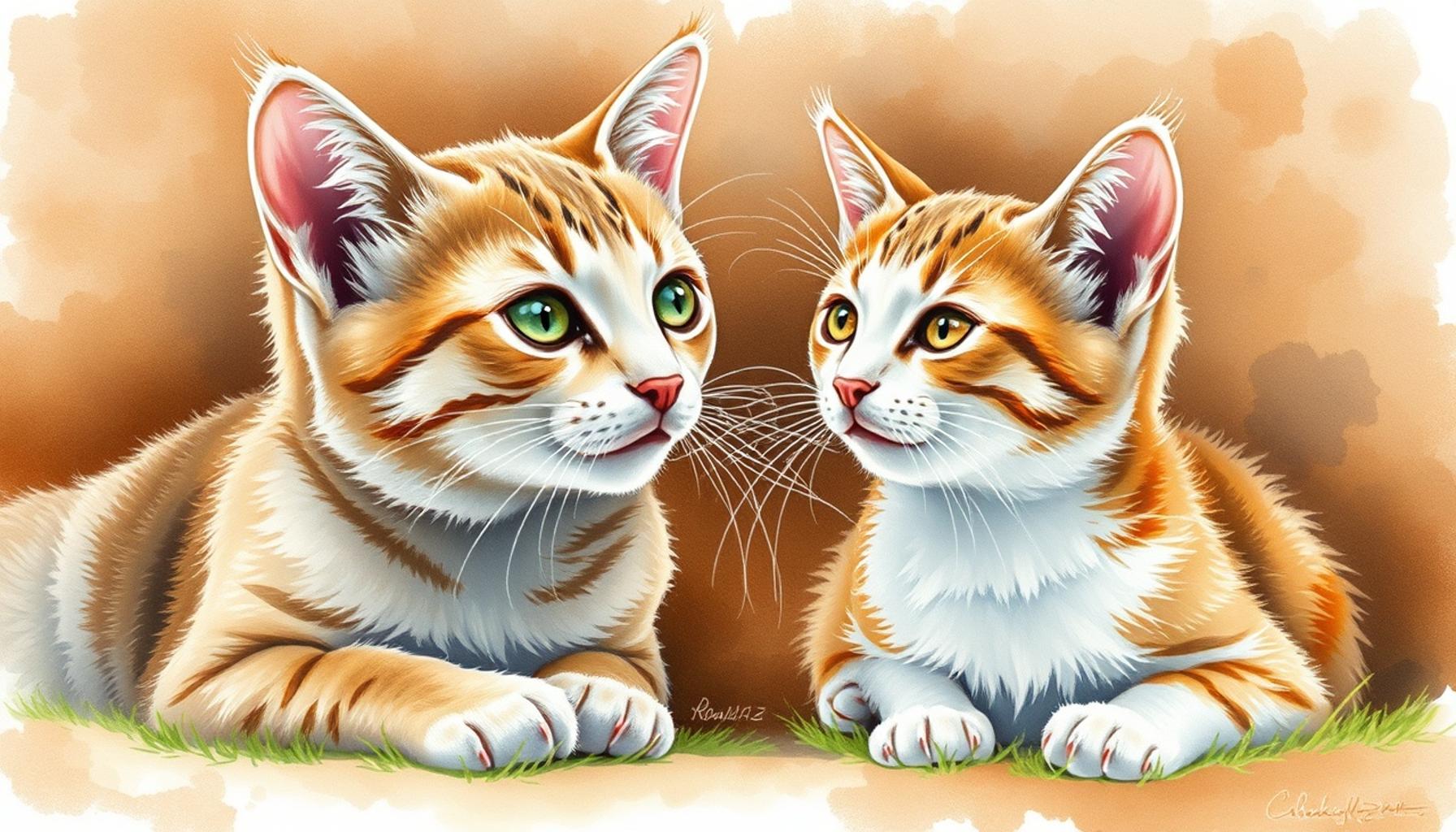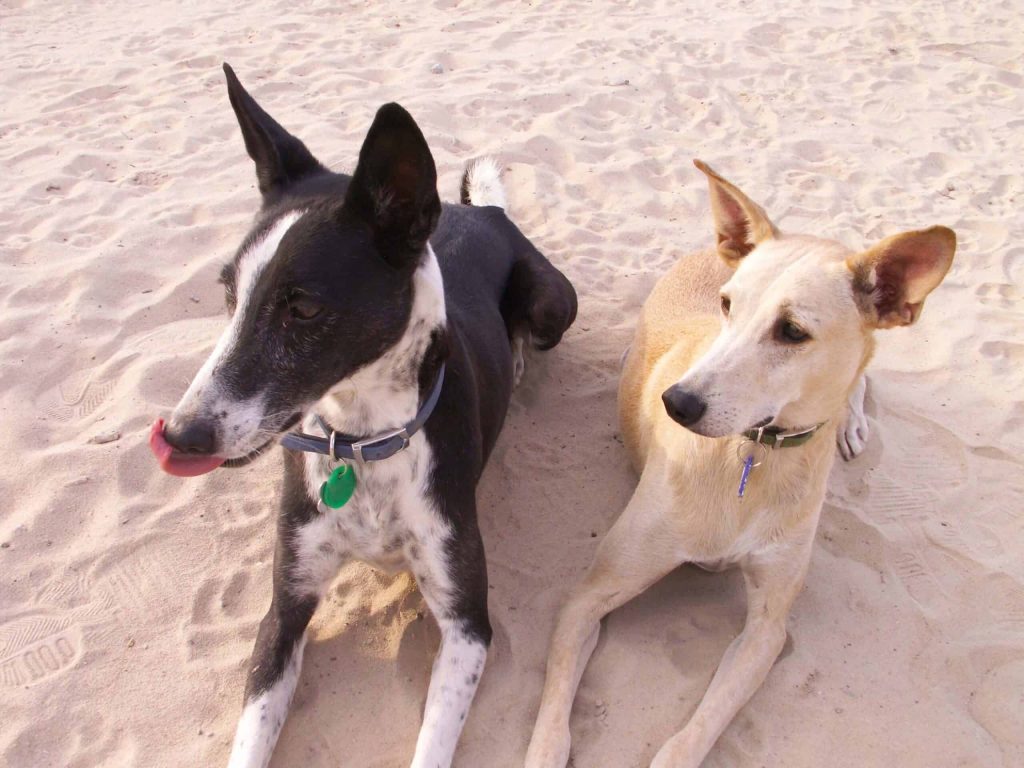How the presence of other animals affects the behavior of dogs and cats

Understanding the Interplay Among Pets
The dynamics among pets, particularly between dogs and cats, can be both fascinating and complex. Various factors contribute to how these animals engage with one another and with their surroundings. Grasping the intricacies of these interactions can greatly enhance the lives of our furry companions and create more peaceful and joyful living environments.
Research has increasingly highlighted how the presence of other animals can affect a pet’s temperament and behavior.
- Socialization: Dogs and cats are inherently social creatures. The presence of other animals can serve as a catalyst for developing better social skills. For example, dogs that regularly attend dog parks tend to be more well-mannered and adaptable compared to those that have minimal exposure to other dogs. These social skills are crucial not only in play but also in establishing communication and understanding cues.
- Stress Levels: The introduction of different animals into a pet’s life can either alleviate or exacerbate stress. For instance, a dog meeting a friendly cat may experience a decrease in anxiety, while a dog encountering an aggressive cat may feel threatened, leading to heightened stress levels. Understanding how these dynamics work is essential for maintaining a pet’s emotional well-being.
- Instinctual Behaviors: Pets often revert to instinctive behaviors when confronted with other species. For example, many dogs will instinctively chase after small animals, such as squirrels or cats, due to their genetic predisposition. Conversely, cats may adopt defensive or territorial behaviors when confronted by unfamiliar dogs, which can lead to tense moments in a household.
A vivid illustration of these interactions can be found in the behavior of dogs during play. When engaged with fellow canine companions, they typically exhibit playful behavior, such as barking, chasing, and rolling around, which helps reinforce positive social habits. On the other hand, when introduced to a new dog or cat, a previously calm cat might show signs of dominance or apprehension, reflecting their natural instinct to protect their territory.
As responsible pet owners, it is vital to pay attention to these behavioral subtleties. Factors such as the species and breed differences, size variations, and individual personalities are crucial in determining how pets will interact. By delving into these fascinating dynamics, we can better cater to the needs of our pets, ensuring a harmonious atmosphere in our homes.
Ultimately, understanding the nature of animal interactions not only enriches the lives of our pets but can also lead to deeper relationships between animals and their owners. Investing time in observing and facilitating positive interactions can yield long-term benefits, enhancing the happiness and health of every pet involved.

DON’T MISS: Click here to learn which foods to avoid for your pet
The Impact of Animal Interaction on Behavior
The behavior of dogs and cats is significantly influenced by their encounters with other animals. This influence is critical for understanding how these pets interact, form social bonds, and navigate their environments. Observing their interactions can reveal vital insights into their emotional health and social development, emphasizing the importance of fostering healthy relationships among various species.
When dogs and cats share their living space with other pets, their individual personalities begin to surface in unique ways. For instance, dogs often showcase a distinct change in behavior when coppered with another dog or cat. They may exhibit increased excitement, as seen during playtime, yet simultaneously display signs of unease when faced with unfamiliar animals. An example can be observed in dogs that are introduced to new felines; their responses can range from playful curiosity to apprehension, depending on the feline’s demeanor.
Additionally, pets can learn valuable life lessons through their interactions. For those looking to enhance their pet’s behavior, consider the following factors:
- Cooperative Play: Engaging in play with other dogs can encourage healthy behaviors such as sharing, patience, and the ability to interpret social cues. Watching dogs engage in friendly wrestling or chase can teach them important lessons on social interactions.
- Hierarchy and Leadership: Animals often adopt roles within their playgroups, with some taking on leadership roles while others may be more submissive. These dynamics can help pets understand their place within a social structure, reducing anxiety and fostering more stable experiences.
- Adaptability: Regular exposure to various animals, including cats, can promote an animal’s overall adaptability. Dogs raised in multi-pet households may display less aggression and more tolerance, making them better companions in diverse environments.
The significance of these interactions profoundly influences the mental capabilities of pets. A study published in the American Journal of Animal Behavior found that consistent social exposure increases cognitive flexibility in dogs, enabling them to adapt better in unfamiliar situations. Similarly, cats benefit from exposure to other pets, often displaying increased confidence and exploratory behavior in environments with diverse species.
However, not all interactions have positive outcomes. The presence of aggressive animals can stoke fear or lead to negative behavioral changes. An example of this can be seen in dogs that have had negative encounters with aggressive cats; such experiences can lead to long-lasting fear or aggression towards all felines. Recognizing these behavioral trends is crucial for responsible pet ownership, as it allows owners to mitigate negative experiences and encourage positive relationships.
In conclusion, the presence of other animals is a double-edged sword, fostering opportunities for growth while posing potential risks. Understanding the importance of these interactions is vital for creating harmonious environments for our pets and enhancing their overall well-being.
| Influence of Other Animals | Behavioral Changes |
|---|---|
| Socialization Opportunities | Cats and dogs exhibit improved social skills through interactions with other animals, enhancing their adaptability. |
| Territorial Behavior | The presence of other pets can trigger territorial disputes or changes in play behavior, impacting their overall dynamics. |
| Stimulation and Play | Engaging with different species can increase physical activity and reduce behavioral issues linked to boredom. |
| Stress and Anxiety | Some pets may experience increased anxiety in the presence of unfamiliar animals, affecting their behavior and habits. |
The presence of other animals significantly influences the behavior of both dogs and cats. This phenomenon presents an exciting area of exploration where owners can witness their pets engaging in diverse interactions, leading to both positive and negative outcomes. For instance, socialization with other pets can enhance a dog or cat’s confidence and social skills, fostering a less fearful and more adaptable nature. However, in some scenarios, increased territorial behavior can arise, particularly when introducing a new animal into the household, which can lead to disputes that must be managed carefully. Understanding these dynamics is essential for ensuring harmonious cohabitation among pets, making this topic rich with insights for pet owners wishing to optimize their pet’s environment. By delving into the complex interplay of animal behavior, readers could further learn how to strengthen their relationships with dogs and cats.
DIVE DEEPER: Click here to discover the impact of pet ownership on mental health</p
Social Dynamics and Behavioral Outcomes
The social dynamics between dogs, cats, and other animals can lead to intriguing behavioral outcomes. Understanding these complex relationships can shed light on traits such as aggression, fear, and even affection. For instance, a dog that frequently interacts with a confident cat may learn to exhibit less anxious behaviors around unfamiliar pets. These lessons are vital for fostering a well-adjusted temperament.
One striking example of behavioral change occurs in multi-pet households. A study from the American Veterinary Medical Association (AVMA) noted that pets raised in environments with various species often develop enhanced social skills. Dogs that coexist with cats exhibit nuanced communication skills, learning to read body language and vocalizations across species. This exposure not only reduces territorial aggression but also nurtures empathy, an essential trait in companion animals.
Reciprocal behaviors can also manifest in unique ways. For example, certain dogs may adopt protective behaviors over kittens or older cats, showcasing a nurturing aspect of their nature. This can be particularly beneficial in homes with children, where positive animal interactions can create a safe and enriching environment. However, it’s important to note that the presence of other pets can also lead to instigating behaviors, especially in younger animals striving to assert their dominance or playfulness.
Introducing a new animal to an established pet can evoke a spectrum of emotional responses based on prior experiences and individual personality traits. Veterinary behaviorists recommend a gradual introduction process, allowing pets to acclimate to one another’s presence without overwhelming them. This gradual integration can help curtail jealousy and reduce stress, as evidenced by findings published in the Journal of Veterinary Behavior. In situations where pets display anxiety, creating distinct areas for each animal to retreat to can be an effective strategy.
Moreover, the presence of other pets can significantly impact feeding behaviors. Dogs and cats often adapt their eating habits when sharing a space with others, influenced by competition or companionship. Observational studies indicate that dogs are prone to ‘vacuuming’ food when competing with another dog, which may lead to overeating, while cats may become more food protective if they feel anxious about a nearby eating rival. Therefore, understanding these behavioral adjustments is essential for ensuring health and wellness.
Lastly, enrichment through interspecies interactions can drive cognitive engagement. Interactive play sessions or positive reinforcement training with other pets can stimulate mental agility, enhancing pets’ problem-solving skills. The ASPCA emphasizes the need for interspecies activities—such as playdates or joint training sessions—as a way to enhance not only physical fitness but also mental stimulation.
As we continue to explore the intricate relationships among dogs, cats, and other animals, it becomes clear that their interactions shape their character. Nurturing these relationships can yield profound benefits, making it imperative for pet owners to acknowledge and embrace the role of social dynamics in enriching their pets’ lives.
DIVE DEEPER: Click here to learn about signs of stress in your pets
Conclusion: The Impact of Interanimal Relationships on Behavior
As we delve into the complex interplay between dogs, cats, and other animals, it becomes increasingly evident that these interactions profoundly influence behavioral traits. The presence of other species in a pet’s environment not only shapes social dynamics but also cultivates essential social skills that help mitigate issues such as aggression and fear. Pets living in multi-species households demonstrate a remarkable ability to adapt, enhancing their communication skills by interpreting diverse body language and vocal signals.
Moreover, the nurturing behaviors exhibited by some dogs can foster a sense of security and companionship among their feline counterparts, positively influencing behavior in family settings. While introducing new pets can present challenges, understanding how to facilitate gradual acclimatization helps alleviate jealousy and stress—important factors in maintaining an emotional balance.
In addition, feeding behaviors and habits can be uniquely affected by the presence of other animals, highlighting the need for pet owners to be mindful of their animals’ interactions during mealtime. Furthermore, interspecies interactions provide significant opportunities for cognitive development, as shared activities encourage mental agility and physical fitness.
In conclusion, the influence of other animals on dogs and cats is undeniable, with enriched relationships leading to a more well-rounded and emotionally stable pet. By promoting diverse interactions through practices such as structured playdates and training sessions, pet owners can foster an environment that nurtures their animals’ natural instincts while enhancing their overall happiness. Embracing these influences not only supports individual animal health but also contributes to a harmonious multi-pet household.



